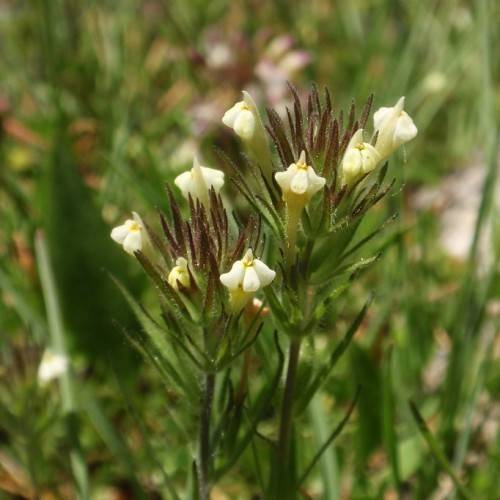
Hairy Owl's Clover
Castilleja tenuis
Also Known As - Hairy Indian Paintbrush,Thin PaintbrushWatering:
Frequent
Hardiness Zone:
Sun:
full sun,part shade
Leaf:
Yes
Growth Rate:
Low
Drought Tolerant:
Yes
Salt Tolerant:
Yes
Care Level:
Medium
watering
This plant species typically requires regular watering. In the spring and summer months, water your Labrador Indian Paintbrush every 3-4 days. During the summer, check to make sure the soil is still slightly moist before watering. During the fall and winter months, water every 7-10 days. Check the soil before watering during this time to ensure it is not too wet or too dry. Always water until it reaches the bottom of the roots, or until it begins to flow out of the bottom of the pot. Be sure to never let the plant sit in standing water.
sunlight
Labrador Indian Paintbrush (Castilleja septentrionalis) grows best in full sun and needs 5-7 hours of direct sunlight a day. The best time of day to give the plants the most sunlight is between 10am and 3pm. Plants should be placed in a sunny spot, which should receive direct sunlight for most of the day, preferably at least 6 hours. Labrador Indian Paintbrush prefers sites with high levels of intensity and long hours of sunlight as the natural habitat is found in relatively low rainfall areas.
pruning
The Labrador Indian Paintbrush (Castilleja septentrionalis) is a beautiful perennial wildflower whose flowers can bloom from June to August in moist climates. Pruning this variety of plant can help encourage reblooming and increase the fullness of the plant. Pruning should begin after the first blooming period for Labrador Indian Paintbrush. Trim away any dead or damaged stems, and any stems that have finished blooming. Doing this in early summer will help maintain the shape of the plant and encourage growth. It is also a good idea to remove any stems that are overcrowding or competing for nutrients. For best results, pruning should be done in stages, beginning in early spring and then again after each blooming cycle. This will help stimulate additional blooms, promote a fuller bush, and manage the size of the plant. When pruning for size, avoid taking more than 1 third of the plant at a time. Pruning more than that can cause shock to the plant and prevent blooming. Labrador Indian Paintbrush should be completely pruned back to the basal leaves come autumn. This will allow the plant to store energy through the colder winter months and ensure a healthy plant in the springtime.
